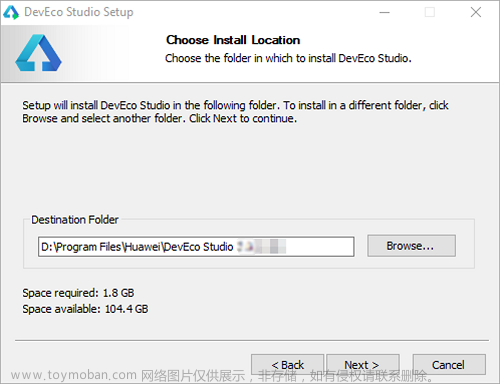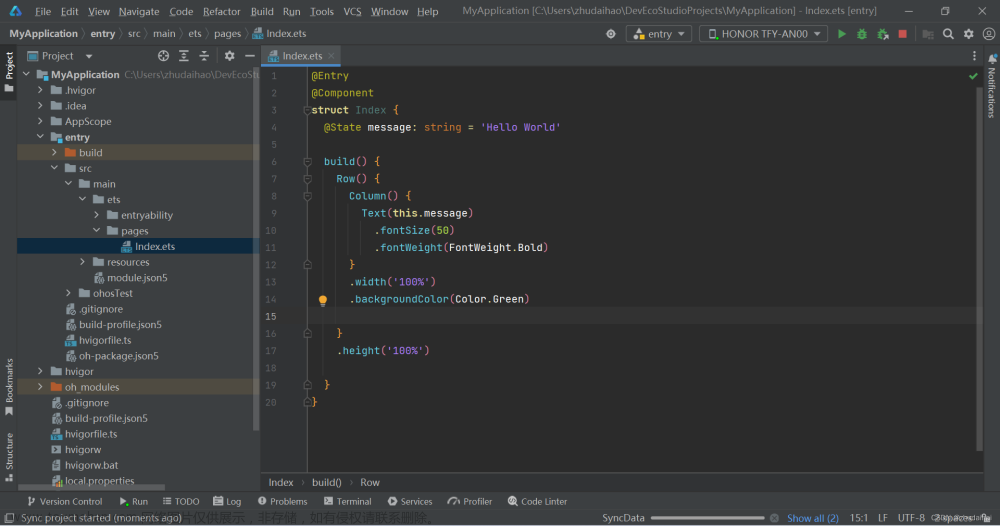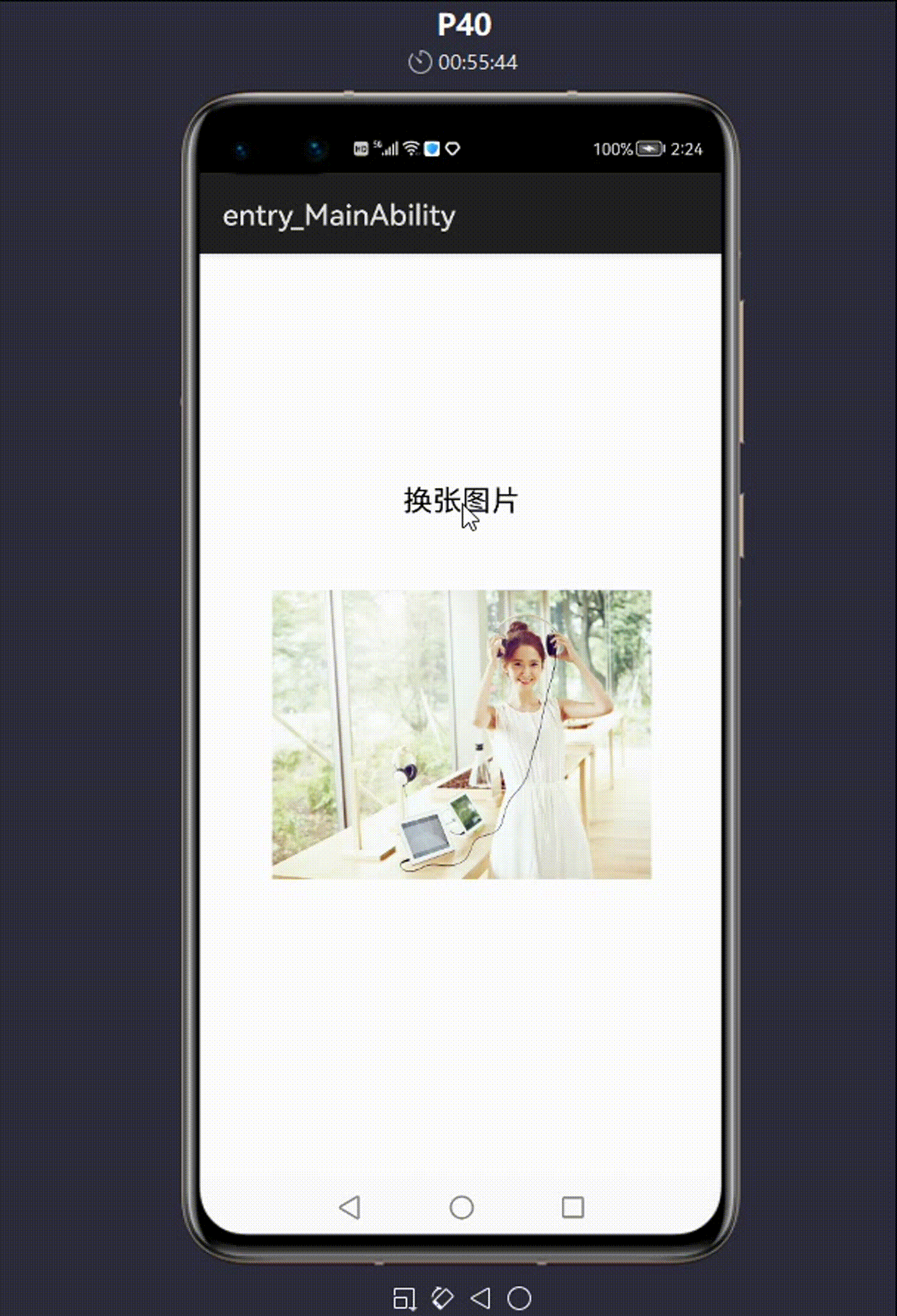网络基础
- 网络基础-TCPIP协议分层模型
- TCP协议-三次握手与四次挥手
- UDP协议-简单高效的传输协议
- HTTP协议-应用间的通信协议
基本使用
鸿蒙应用发起HTTP请求的基本使用,如下:
- 导入http模块
- 创建httpRequest对象
- 发起http请求,并处理响应结果
第一、导入http模块:
import http from '@ohos.net.http'
第二、创建httpRequest对象,注意的是每一个httpRequest对象对应一个http请求任务,不可复用。
const httpRequest = http.createHttp()
第三、发起请求,比如POST请求
httpRequest.request(
// 请求url地址
url,
{
// 请求方式
method: http.RequestMethod.POST,
// 请求的额外数据。
extraData: {
"param1": "value1",
"param2": "value2",
},
// 可选,默认为60s
connectTimeout: 60000,
// 可选,默认为60s
readTimeout: 60000,
// 开发者根据自身业务需要添加header字段
header: {
'Content-Type': 'application/json'
}
})
.then((data) => {
if (data.responseCode === http.ResponseCode.OK) {
// 处理响应结果
// data.result为服务器返回的业务数据
console.info('Result:' + data.result);
console.info('code:' + data.responseCode);
}
}).catch((err) => {
console.info('error:' + JSON.stringify(err));
});
最后需要声明网络权限,在module.josn5文件中声明:
{
"module" : {
"requestPermissions":[
{
"name": "ohos.permission.INTERNET"
}
]
}
}
上面就是网络请求的简单使用,接下来通过Promise来封装一个网络请求库,统一管理请求参数、响应数据、日志的输出等,对外屏蔽了细节,使用者只需定义业务数据的实体类以及调用即可。
封装
以**玩Android**开放接口为测试用例
定义业务数据的实体类,通过泛型来接收不同的数据类型:
export class ResponseResult<T> {
errorCode: number;
errorMsg: string;
data?: T | Object | string;
}
把各种请求方式用枚举声明RequestMethod
export enum RequestMethod {
OPTIONS,
GET,
HEAD,
POST ,
PUT,
DELETE,
TRACE,
CONNECT
}
其实在http模块中已经有对应的枚举,之所以再用一个新枚举来声明,是简化使用,同时也是将http模块相关细节屏蔽掉不对外开放,这样就可以灵活替换网络库,也具有扩展性。
定义一个HttpUtils类实现:
export class HttpUtils{
public static readonly SUCCESS_CODE: number = 0
public static readonly READ_TIME_OUT = 60 * 1000
public static readonly CONNECT_TIME_OUT = 60 * 1000
private baseUrl: string = ""
constructor(baseUrl: string) {
this.baseUrl = baseUrl
}
private methodName(method: RequestMethod): http.RequestMethod {
switch (method){
case RequestMethod.OPTIONS:{
return http.RequestMethod.OPTIONS
}
case RequestMethod.GET:{
return http.RequestMethod.GET
}
case RequestMethod.HEAD:{
return http.RequestMethod.HEAD
}
case RequestMethod.POST:{
return http.RequestMethod.POST
}
case RequestMethod.PUT:{
return http.RequestMethod.PUT
}
case RequestMethod.DELETE:{
return http.RequestMethod.DELETE
}
case RequestMethod.TRACE:{
return http.RequestMethod.TRACE
}
case RequestMethod.CONNECT:{
return http.RequestMethod.CONNECT
}
}
}
private tag(n: string): string {
return `${TAG}/${n}`
}
request<T>(path: string, reqMethod: RequestMethod, parameter: Map<string, Object> = null): Promise<T | null> {
// 注意的是每一个httpRequest对象对应一个http请求任务,不可复用。
const httpRequest = http.createHttp()
const method = this.methodName(reqMethod)
let extraData = {}
let url = `${this.baseUrl}/${path}`
if (parameter != null) {
switch (reqMethod) {
case RequestMethod.POST, RequestMethod.PUT: {
extraData = Object.fromEntries(parameter)
break;
}
case RequestMethod.GET,RequestMethod.DELETE: {
const urlParams = Object.keys(parameter).map(key => `${key}=${parameter[key]}`).join('&')
if (url.includes("?")) {
url = `${url}${urlParams}`
} else {
url = `${url}?${urlParams}`
}
break;
}
}
}
let n = Math.random().toString(10).slice(2)
LogUtils.debug(this.tag(n), "==================Request====================")
LogUtils.debug(this.tag(n), "url: " + url)
LogUtils.debug(this.tag(n), "method: " + method.toString())
if (reqMethod == RequestMethod.POST || reqMethod == RequestMethod.PUT)
LogUtils.debug(this.tag(n), "extraData: " + JSON.stringify(parameter, null, 2))
return new Promise( async (resolve, reject) => {
let beginTime = await systemDateTime.getCurrentTime(false)
httpRequest.request(url,
{
method,
readTimeout: HttpUtils.READ_TIME_OUT,
connectTimeout: HttpUtils.CONNECT_TIME_OUT,
header: {
'Content-Type': 'application/json'
},
extraData
}
).then( async (value) => {
let endTime = await systemDateTime.getCurrentTime(false)
LogUtils.debug(this.tag(n), "==================Response====================")
LogUtils.debug(this.tag(n), "url: " + url + " "+ (endTime - beginTime)+"ms")
LogUtils.debug(this.tag(n), "method: " + method.toString())
LogUtils.debug(this.tag(n), "header: " + JSON.stringify(value.header, null, 2))
LogUtils.debug(this.tag(n), "responseCode: " + value.responseCode)
LogUtils.debug(this.tag(n), "resultType: " + value.resultType)
if (value.responseCode == http.ResponseCode.OK) {
let result: ResponseResult<T> = JSON.parse(value.result.toString())
LogUtils.debug(this.tag(n), "body: " + JSON.stringify(result, null, 2))
if (result.errorCode == HttpUtils.SUCCESS_CODE) {
resolve(result.data as T)
} else {
reject(result.errorMsg)
}
} else {
reject("请求失败")
}
}).catch((reason) => {
reject(reason)
})
})
}
get<T>(path: string, parameter: Map<string, Object> = null): Promise<T | null> {
return this.request<T>(path, RequestMethod.GET, parameter)
}
post<T>(path: string, parameter: Map<string, Object> = null): Promise<T | null> {
return this.request<T>(path, RequestMethod.POST, parameter)
}
delete<T>(path: string, parameter: Map<string, Object> = null): Promise<T | null> {
return this.request<T>(path, RequestMethod.DELETE, parameter)
}
put<T>(path: string, parameter: Map<string, Object> = null): Promise<T | null> {
return this.request<T>(path, RequestMethod.PUT, parameter)
}
}
const YiNet = new HttpUtils(BASE_URL)
export default YiNet
使用发起网络请求:
aboutToAppear() {
let map = new Map<string,string>()
map["cid"] = 294
YiNet.get<ArticleList>("project/list/1/json",map).then((data)=>{
this.data = JSON.stringify(data, null, 2)
})
let map2 = new Map<string,string>()
map2["username"] = "123"
map2["password"] = "123456"
YiNet.post<User>("user/login",map2).then((data)=>{
this.data = JSON.stringify(data, null, 2)
}).catch((err)=>{
Prompt.showToast({message:err})
})
}
日志输出效果:

如果有多个请求,日志可能会混合交叉不利于查看,可以通过HttpUtils/xxxxxx来查看具体某一个请求日志,其中xxxx是一个随机数大部分情况下是具有唯一性。文章来源:https://www.toymoban.com/news/detail-764461.html
上面就是官方的http模块的基本封装,在此基础上可以设计一套拦截器来辅助业务需求。文章来源地址https://www.toymoban.com/news/detail-764461.html
参考
- https://developer.huawei.com/consumer/cn/training/course/slightMooc/C101667364948559963?ha_linker=eyJ0cyI6MTcwMjE3NzI3OTYyMywiaWQiOiI4MmM3ZTI1MmFmMDJlMDZiODBmOGU1ZDM5ZTI5YmMyOCJ9
- https://www.wanandroid.com/blog/show/2
到了这里,关于HarmonyOS鸿蒙应用开发——HTTP网络访问与封装的文章就介绍完了。如果您还想了解更多内容,请在右上角搜索TOY模板网以前的文章或继续浏览下面的相关文章,希望大家以后多多支持TOY模板网!













